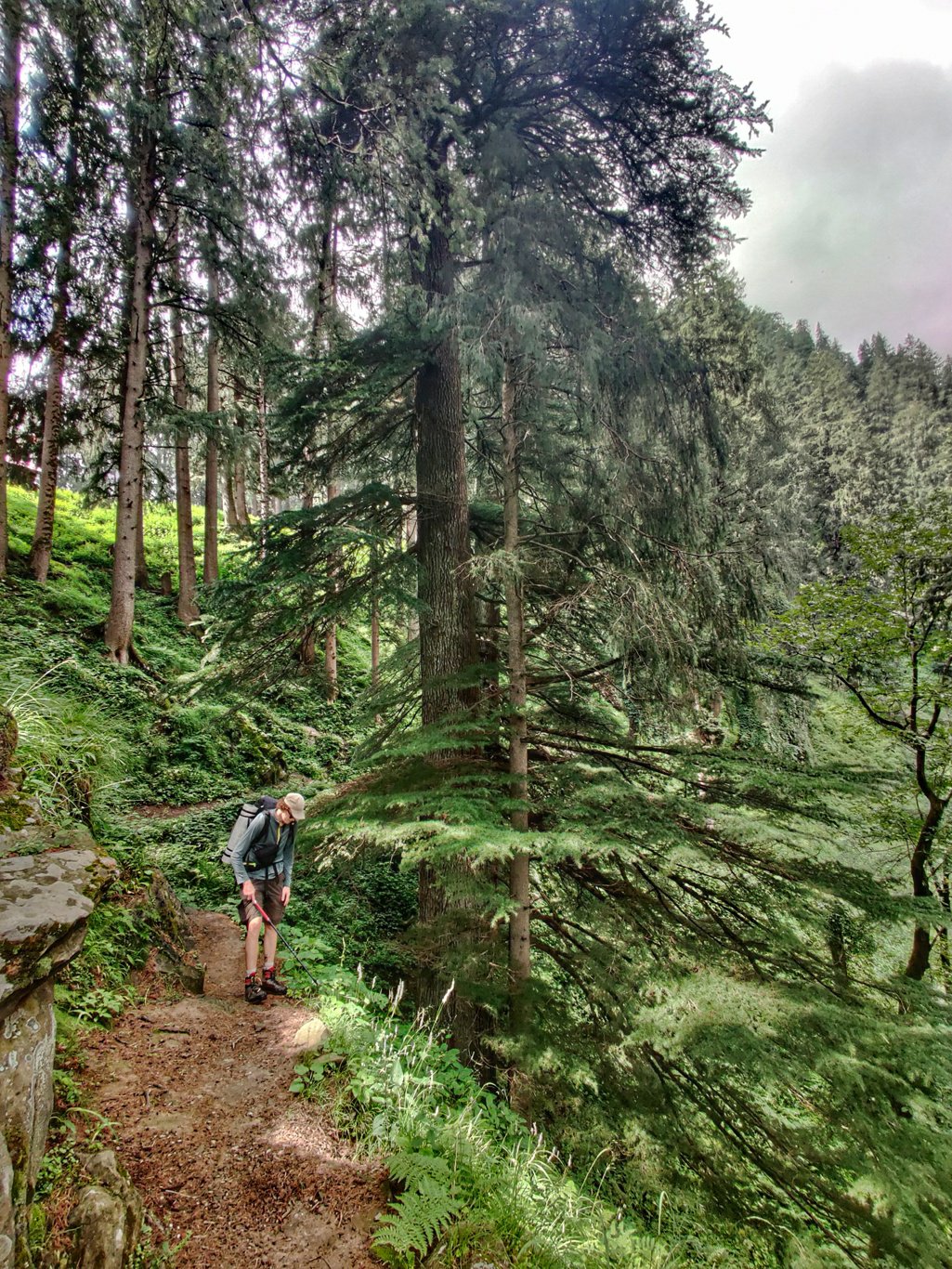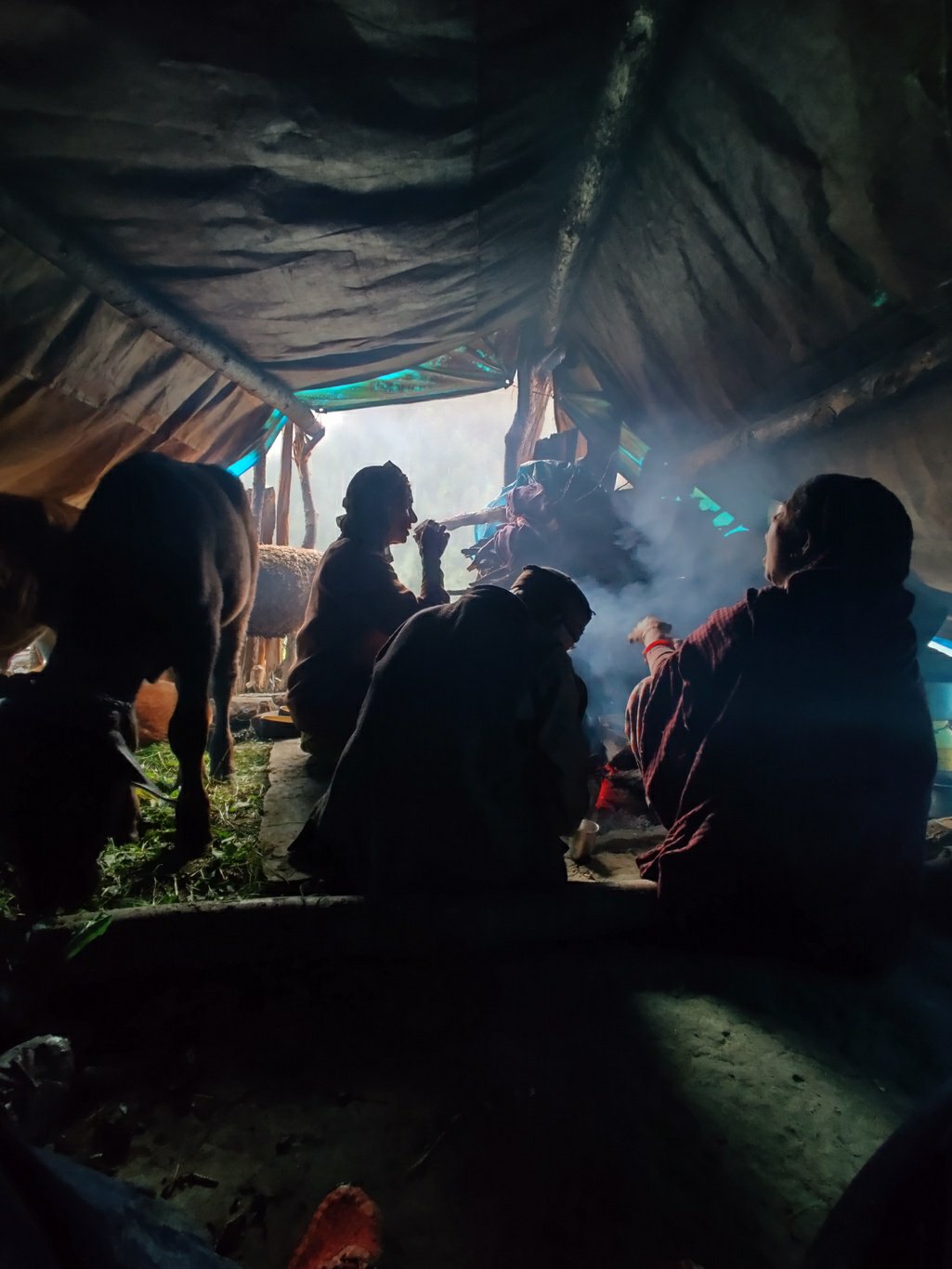The next planned traverse was a cross over from the Barot valley to Bara Bhangal through the lesser known Gairu pass. No documentation was available online as to the exact route or whether the trail was still in use. All I had was an approximate location of the pass. It would turn out an adventurous 3 day experience of getting lost, bad weather, landslided trails and getting stuck in dense vegetation and being stuck on the wrong side of a thundering Kaliheni Nalla. As usual the challenges thrown at us gave us new learnings and made us more confident alpine style hikers.

We started off with a sumptuous breakfast on a sit out terrace of a nice little dhaba at Lohardi – cheese & aloo parotta’s with a lip smacking home made curry. Next we packed up food and snacks for the estimated 2-3 days crossing of the Gairu pass. After bidding adieu to Thanga who was leaving back to Chennai after 2 weeks, myself and Leo – my French co-trekker for the next 2 weeks – were on our way. I had no idea what lays ahead – the thrill of the unknown made me nervous and excited at the same time.

We started off on the right side of the Uhl river proceeding upstream from Lohardi. I was able to mark the trail on Google Satellite maps till a locality called Lambadug Got where the Barot valley takes a right turn and the trail dissappears in dense pine forest. On the Bara Bhangal side of the pass also I had put a few reference points where the trail was visible. Closer to the pass however there was no visual evidence of any clear trail possibly due to either disuse or volatile terrain (scree, moraines, meadows and forest).

A few kilometers upstream from Lohardi we came into a new hydro power project under construction which – in my personal view – was 1. a scare in the natural landscape and would soon 2. transform the local community to non sustainable ways of living. Development (as defined by humans) and sustainability are two opposing forces. We cross the Uhl river here and proceed along a small trail just above the river boulders.

A little while further there is a small pedenstrian bridge where we step onto a conctrete path that leads us to the last settlement of the Barot valley – Bhujling. This is probably one of the more picturesque villages which I came across in the Himalayas – beautiful homes built with natural materials, friendly people (non touristic) in a beautiful setting of terrace farms and pine forest on steep valley slopes below the high ranges of the Dhauladar. Last year I came down from the Nohru pass above which connects to Bada Gran, which has fallen in disuse.

Ladies were carrying fresh greens in big baskets from the farms back home to feed the animals. Everyone seemed engaged in some activity or the other. People were living together as one community in a paradise like setting, friendly faces and smiles greeting us as we were passing through. Upon learning our plans to cross the Gairu pass a few local boys came along to guide us on the initial trail section. One lady gave us a handful of small apples freshly plucked form the orchard.

As common in many hamlets the village possessed a hydro powered grinder used to grind corn, wheat, rice using natural power from the nearby stream. A creative design transferred the vibrations of the rotating grinding stone through a wooden handle to slowly release the grains into the stone. Natural engineering at its best!











